Why avoiding commercial chicken feed might be doing more harm than good
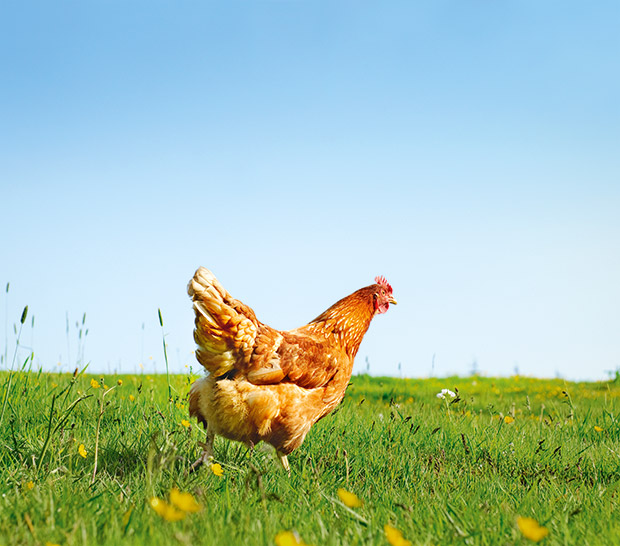
A free-range diet of whole grains and grass is usually not enough to keep your poultry in good health.
Words: Sue Clarke
A lot of people think whole grains and grass are the best diet for their poultry.
If you ask for more details, they often mention household scraps, wheat, vegetables, weeds, plus anything their bird finds while free ranging. I’ve come across people who are distrustful of what is in bags of poultry feed, preferring to make their own.
But of all the health issues I have seen in poultry in the years I’ve been writing this column, a poor or incorrect diet is often a contributing factor. Poultry nutrition is a well-studied science. The pellets you buy might look like a simple mix of crushed grains, but they are a balanced diet of fats, protein, carbohydrates, vitamins, and minerals.
Commercial feeds are the easiest, and almost always the most economical way for most people to ensure their poultry get the nutrition they need for good health.
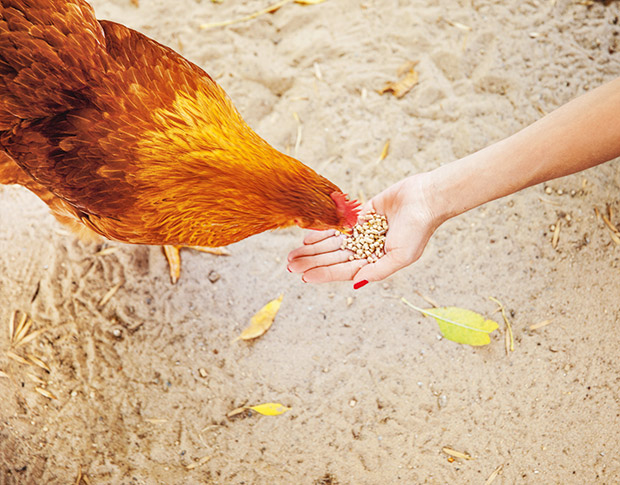
If you have breeding birds, add a vitamin supplement to water to help avoid deficiencies in chicks.
Poultry health can easily be compromised by the wrong food or not enough of the right nutrients. An inappropriate diet can affect a bird’s immune system, leaving it unable to cope with the stress of infection or parasites. If the feed is short of key nutrients, a bird may develop physical or neurological issues.
Nutritional deficiencies can be hard to diagnose. Birds will often look reasonably healthy. It’s little things that give a clue to poor diet. Confusingly, they are also symptoms of other health issues:
■ poor or slow-growing feathers
■ slow growth rate
■ slow to come into lay
■ laying fewer eggs
■ unsteady gait
■ curled toes
■ bent neck
■ soiled feathers
■ loose droppings
If you choose to make your own feed, you need a good knowledge of the nutritional requirements of poultry. The diet will need to be adjusted as chicks grow into adults. Different ages need different balances of protein, and micro-ingredients like vitamins and minerals, especially calcium.
If you use a commercial feed, but supplement it with grains, scraps, and/or a free-range, your birds may not get enough of essential micro-ingredients to prevent deficiencies. Ideally, these ‘extras’ should only be 10 percent of a bird’s diet. Feed scraps in the afternoon, so birds get the nutrients they need from a balanced food supply first.
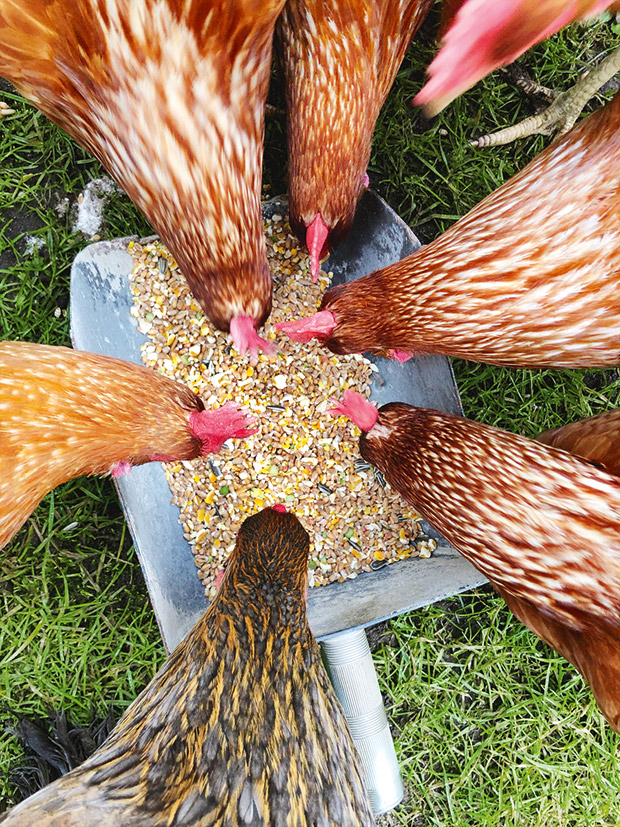
Many micro-ingredients need to be in balance with each other for a bird to gain any benefit.
Vitamin D, calcium, and phosphorous must all be in the correct proportions if a hen is to lay eggs with good shells. Supplementing extra calcium when there is a shortage of either phosphorous or vitamin D can actually cause shell problems.
Vitamin E and selenium are essential to health. New Zealand soil is deficient in selenium (and therefore in the grains we grow), so commercial poultry feed is usually supplemented with selenium.
Vitamin E is important for the integrity of cell membranes in the body. A deficiency affects many parts of the body, including the brain, reproductive system, and blood vessels. Without the correct amounts, birds can develop encephalomalacia, also known as ‘crazy chick’ disease. Affected birds struggle to maintain their balance and fall over. Blood vessel walls become weak and haemorrhage. Once the damage is done, the bird cannot be treated.
Vitamin E is easily destroyed if the fat in the feed goes rancid, if feed is left in the sun for too long, or poorly stored. If you suspect a vitamin E deficiency, it’s best to add a proprietary vitamin mix to the water supply, especially of breeding birds. Also, review the storage conditions and age of any feed you buy in.
Calcium is one of the most misunderstood minerals in poultry. It is essential for an adult hen to make eggshells, but it must be fed in the right proportion to phosphorous and Vitamin D. A commercial layer feed will have the correct levels, but if you dilute a flock’s diet by feeding out a lot of scraps, hens won’t receive what they need.
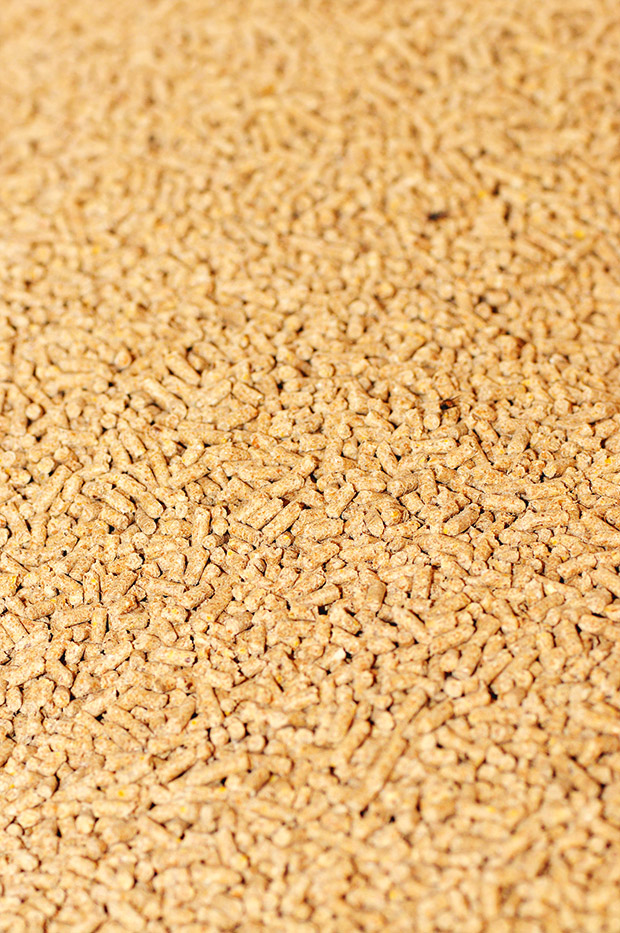
Commercial feed is an easy way to ensure your birds get the nutrition they need.
Birds under 16 weeks have a low calcium requirement. If you add extra calcium to their feed, for example, by feeding them layer feed, their immature kidneys can block with crystals, causing sudden death many months later.
Never have layer feed where chicks under 16 weeks can get at it. Always feed extra calcium (grit) in a separate container, raised off the ground so young birds can’t reach it.
Poultry need all vitamins except Vitamin C, which they can synthesize themselves. However, research has found that additional vitamin C may be useful in times of stress, especially heat stress and during transport.
WHY A GOOD THING CAN BE TOO MUCH
Maize (corn) is high in energy but low in protein, sodium, calcium, and some vitamins. Like most grain treats, it’s best fed in moderation – no more than 10g per bird, per day.
Birds that eat a high energy diet, often including maize as a scratch feed, are far more likely to develop a fatty liver and hold large amounts of fat in their abdomen, especially as they age.
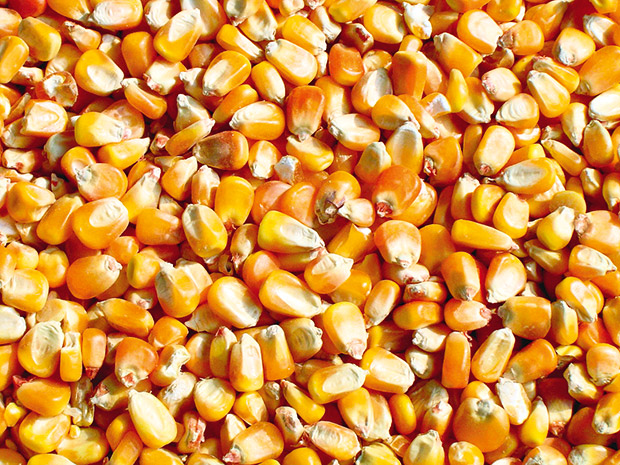
A fatty liver becomes softer and is more prone to bleeding. A hen with a fatty liver can rupture it as she strains to lay an egg, killing her very quickly. Rancid fats in feed can also cause the liver to haemorrhage.
WHY THE INVISIBLE NUTRIENTS ARE SO IMPORTANT
Micro-ingredients such as vitamins and minerals are hard to provide in a free-range environment. Birds may look busy, scratching around and pecking, but it’s no guarantee they are getting what they need.
You’ll often see birds run to a feed source and gorge themselves. This behaviour confuses people, making them think the birds ‘love’ that food. But birds instinctively compete for a food source, whether it’s nutritious or not. They then eat voraciously to fill their crops so they can digest it later.
If their diet is limited, for example to bread, grass, and vegetable scraps, they will fill their crop with these bulky feeds, leaving no room for anything more nutritious they may come across later in the day.
ONE KEY NUTRIENT YOU PROBABLY DON’T THINK ABOUT
A hen can drink half a litre to a litre of water per day, depending on the time of year. Poultry prefer and will drink more fresh, clean water.
Waterers need to be cleaned regularly, and ideally, refreshed daily. In summer, it’s best to have the container in a shaded area, so it remains cool, as birds use it to lower their temperature on hot days.
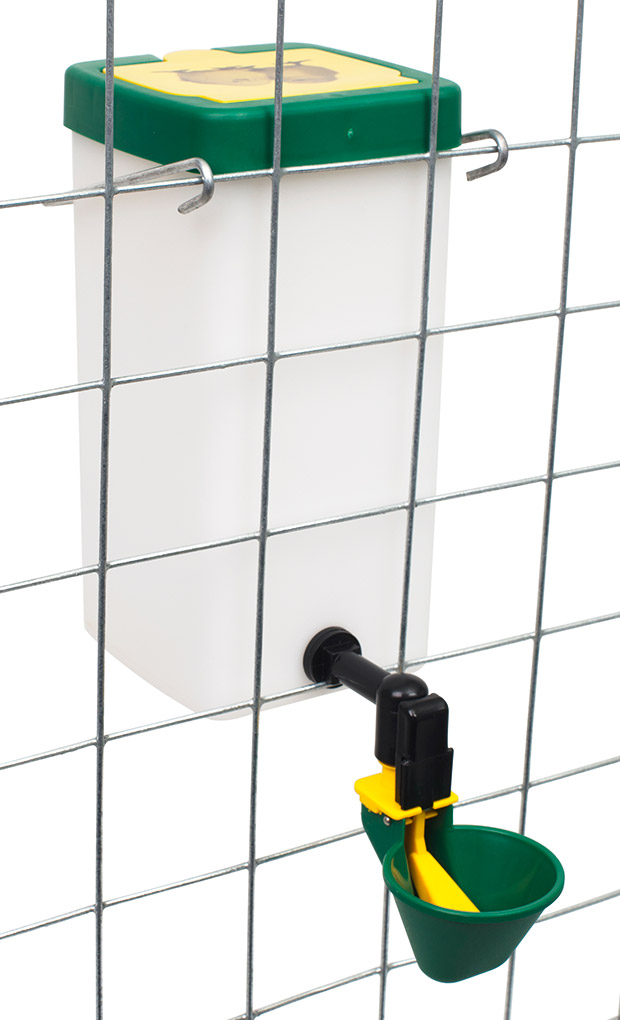
A cup waterer or a raised waterer are good options for avoiding contamination.
You want a container that won’t spill, and that can’t be easily contaminated by dirt, litter, or wild bird faeces. Unless you have chicks, the best idea is to mount the water 20cm or so off the ground. Another great way to avoid contamination is to use nipple or cup waterers.
IMPORTANT VITAMINS AND MINERALS IN POULTRY
Fat-soluble vitamins
Vitamin A
Symptoms of a deficiency: decreased egg production, weakness, lack of growth
Vitamin D
Symptoms of a deficiency: thin-shelled eggs, reduced egg production, retarded growth, rickets
Vitamin E
Symptoms of a deficiency: enlarged hocks, encephalomalacia (crazy chick disease)
Vitamin K
Symptoms of a deficiency: prolonged blood clotting, intramuscular bleeding
Water-soluble vitamins
B1 (thiamine)
Symptoms of a deficiency: loss of appetite, death
B2 (riboflavin)
Symptoms of a deficiency: curly-toe paralysis, poor growth, poor egg production
B5 (pantothenic acid)
Symptoms of a deficiency: dermatitis, lesions on mouth and feet
B3 (niacin)
Symptoms of a deficiency: bowed legs, inflammation of tongue and mouth cavity.
Choline
Symptoms of a deficiency: poor growth, fatty liver, decreased egg production
B12
Symptoms of a deficiency: anaemia, poor growth, embryonic mortality
Folic acid
Symptoms of a deficiency: poor growth, anaemia, poor feathering, poor egg production
Biotin
Symptoms of a deficiency: dermatitis on feet and around eyes and beak
Minerals
Calcium
Symptoms of a deficiency: poor eggshell quality, poor hatchability, rickets
Phosphorus
Symptoms of a deficiency: rickets, poor egg shell quality, poor hatchability
Magnesium
Symptoms of a deficiency: sudden death
Manganese
Symptoms of a deficiency: leg deformities, poor hatchability
Iron anaemia
Symptoms of a deficiency: copper anaemia
Iodine goitre
Symptoms of a deficiency: cobalt slow growth, mortality, reduced hatchability
WHERE TO FIND SUPPLEMENTS
There are vitamin and mineral products available from vets and poultry supply stores which can be useful supplements.
Check the label. Some are sold for aviary and cage birds in small amounts and may be useful as an added tonic for a sick chicken. Others are available in large quantities and can be used to give the whole flock a boost.
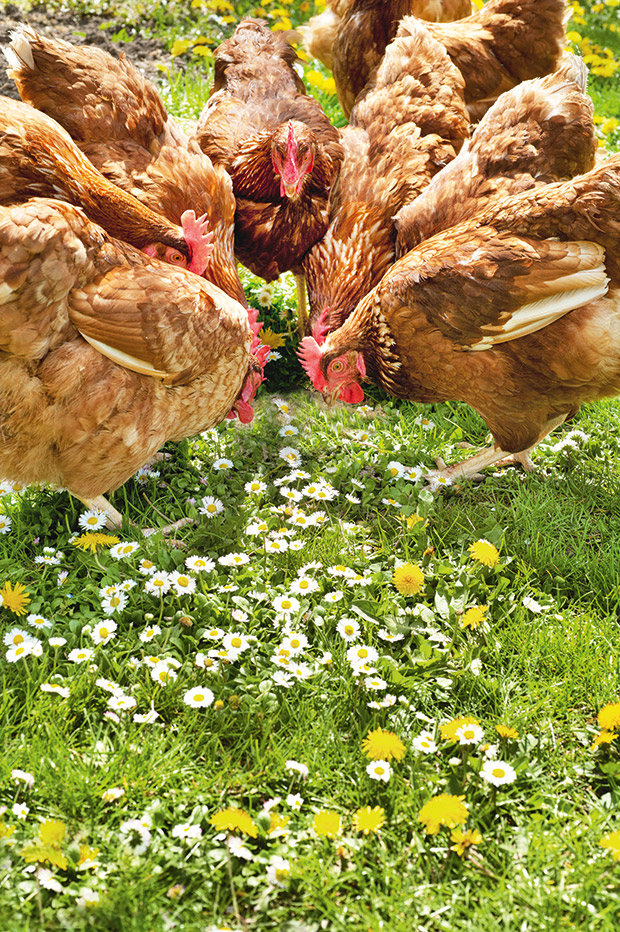
I recommend adding a vitamin supplement to the water of laying hens and breeding roosters. These birds have an increased requirement for vitamins and minerals to ensure chicks develop normally. A deficiency of vitamins or minerals can also do irreversible damage to developing embryos and chicks.
Have a bird-specific electrolyte mix on hand, in case of illness.
THE COMPLEX MIX OF PRE-MIX
The manufacturers of commercial feeds have resident nutritionists who formulate diets, or they follow guidelines like the one below for all the different ages and classes of birds.
The various feeds – Chick Starter, Grower, Layer, Meat bird – all have varying levels of vitamins and minerals to suit the relevant bird’s stage of life.
Feed manufacturers add a special ‘pre-mix’ to major ingredients like grains, legumes, and animal protein. It’s a tiny amount of powder, often just 5kg per tonne of feed, that contains vital quantities of vitamins and minerals necessary for good health.
You may see it if you feed mash, not pellets, to your poultry. It’s a white powder that is sometimes left behind in the bottom of a feeder after birds pick out the larger chunks of grain. That’s why I recommend pellets or crumbles, so you guarantee birds eat everything they need.
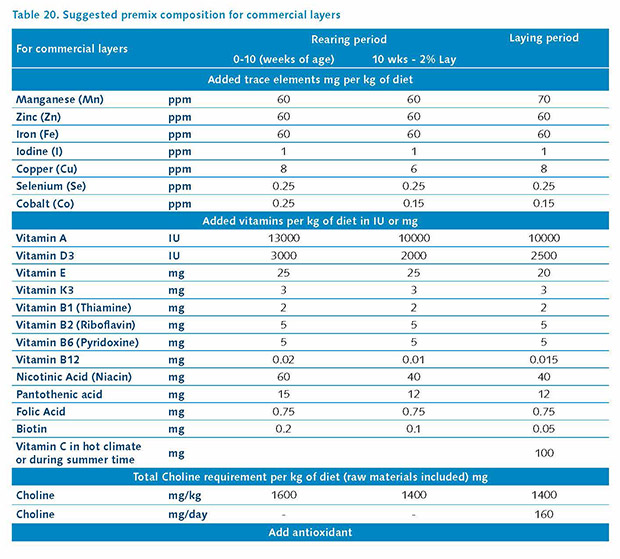
Nutritional guides like the one above give you an idea of just what is required for a bird to be at peak health and production. Many of these nutrients are very hard or impossible for a bird to find in a simple, grassy, free-range setting. It is possible to get close if an owner is growing specialist plants (eg, duckweed), black soldier fly larvae, and/or mealworms, for their high levels of protein and important amino acids.
MORE HERE
Confessions of a Chookaholic, Part One: Why a quality coop is a good investment
Is your chicken gasping for air? It could mean it has gapeworms
Love this story? Subscribe now!
 This article first appeared in NZ Lifestyle Block Magazine.
This article first appeared in NZ Lifestyle Block Magazine.
